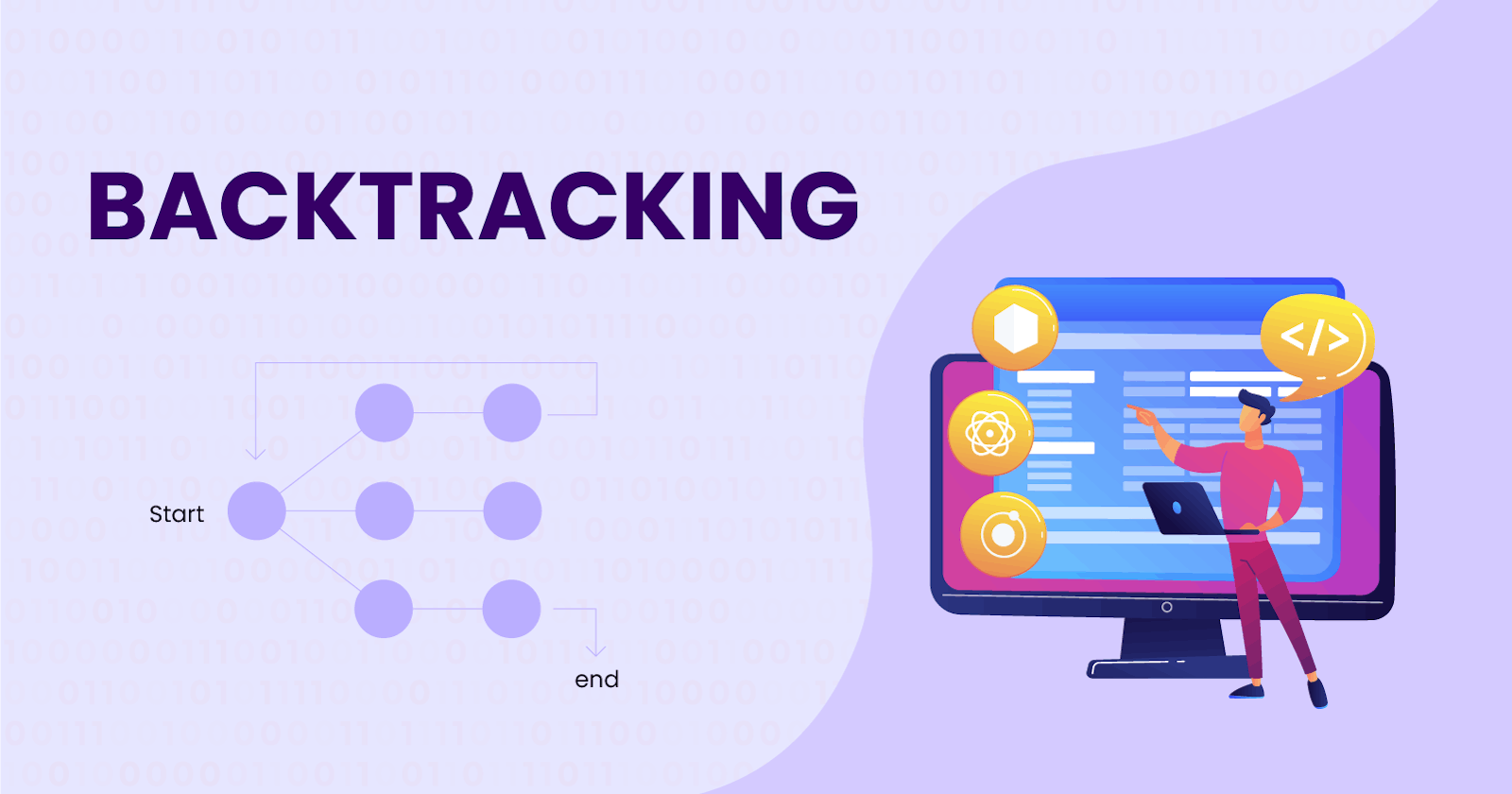1. What is backtracking?
Backtracking is an algorithmic technique used to systematically explore all possible solutions to a problem by incrementally building a solution and backtracking when a solution cannot be completed further. It is particularly useful for solving problems with multiple decision points and finding an optimal solution among a large set of possible solutions.
(OR)
Backtracking is an algorithmic technique for solving problems recursively by trying to build a solution incrementally, one piece at a time, removing those solutions that fail to satisfy the constraints of the problem at any point in time.
2. Difference between BackTracking and Recursion?
Recursion is a programming technique where a function calls itself to solve a smaller subproblem of the original problem.
It involves dividing a problem into smaller subproblems and solving them recursively until a base case is reached.
Recursion does not necessarily explore all possible solutions, and it may not always be the most efficient approach for certain types of problems.
Backtracking, on the other hand, is a specific algorithmic technique that uses recursion to systematically explore all possible solutions to a problem.
It involves trying out different possibilities at each decision point and recursively exploring each possibility until a valid solution is found or all possibilities are exhausted.
If a solution is not feasible, backtracking undoes the last decision and tries another possibility.
3. When to use backtracking?
Backtracking is best suited for problems where the solution space is large and there are constraints that limit the search for the correct solution.
It is commonly used for problems like finding all possible permutations or combinations, solving puzzles, finding a path in a maze, and more.
Backtracking is especially useful when the problem can be divided into smaller decisions and there is a clear stopping criterion when a valid solution is found.
4. What is the process of backtracking?
The process of backtracking can be illustrated with the following example:
The problem is to find a path through a maze from the start to the finish.
The maze can be represented as a graph, where each vertex represents a cell in the maze and each edge represents a possible path between two cells.
The backtracking algorithm starts at the start vertex and explores all possible paths from there.
If a path reaches a dead end, the algorithm backtracks to the previous vertex and tries a different path.
The algorithm continues in this way until it finds a path to the finish vertex or it exhausts all possible paths.
5. Most famous problems of backtracking to prepare to master backtracking?
Famous problems on backtracking:
N-Queens Problem: Placing N queens on an NxN chessboard such that no two queens threaten each other.
Sudoku Solver: Filling in the missing numbers in a 9x9 Sudoku grid following Sudoku rules.
Knight's Tour: Finding a sequence of moves for a knight on a chessboard to visit every square exactly once.
Rat in a Maze: Finding a path for a rat to reach the destination in a maze.
Subset Sum Problem: Finding a subset of a given set with a given sum.
Permutations and Combinations: Generating all possible permutations or combinations of a set of elements.
Conclusion:
Mastering backtracking requires practice and understanding the patterns in various problems. It involves efficiently exploring the search space, pruning unnecessary branches, and implementing efficient data structures to store the current state. Regularly solving backtracking problems and understanding the underlying recursive approach will help improve problem-solving skills and optimize solutions.
Happy Coding✨
